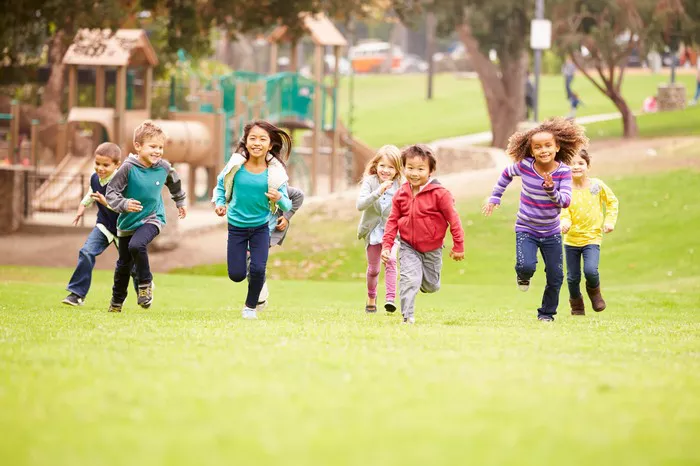Kindergarten, a pivotal stage in a child’s educational journey, lays the foundation for lifelong learning and development. While academic subjects are undoubtedly important, fostering a positive and nurturing classroom environment is equally crucial. One effective way to promote positivity and engagement among young learners is through the implementation of a “Joke of the Day” routine. In this article, we explore the benefits of incorporating jokes into the kindergarten curriculum, strategies for selecting age-appropriate jokes, and tips for maximizing the educational value of this lighthearted practice.
Understanding the Importance of Humor in Early Childhood Education
Humor plays a significant role in early childhood development, offering numerous cognitive, social, and emotional benefits for young children. Incorporating humor into the kindergarten classroom can:
1. Foster a positive classroom atmosphere: Laughter creates a sense of joy and camaraderie among students, promoting a supportive and inclusive learning environment.
2. Enhance social skills: Sharing jokes encourages children to engage in cooperative play, take turns, and communicate with their peers.
3. Boost cognitive development: Understanding and appreciating jokes requires critical thinking skills, such as inference and perspective-taking, which are vital for academic success.
4. Promote emotional well-being: Laughter reduces stress, promotes relaxation, and helps children develop resilience in the face of challenges.
The Role of “Joke of the Day” in Kindergarten
“Joke of the Day” is a simple yet effective classroom routine that involves sharing a new joke with students each day. This practice not only brings a sense of fun and excitement to the kindergarten classroom but also offers numerous educational benefits:
1. Language development: Jokes introduce children to new vocabulary, wordplay, and figurative language, helping to expand their linguistic abilities.
2. Comprehension skills: Understanding jokes requires children to infer meaning, make connections, and grasp nuances of language, enhancing their comprehension skills.
3. Critical thinking: Analyzing jokes encourages children to think creatively, solve problems, and make inferences, fostering critical thinking skills.
4. Social interaction: Sharing jokes fosters positive social interactions, encourages cooperation, and strengthens peer relationships, promoting social-emotional development.
Selecting Age-Appropriate Jokes for Kindergarten
When incorporating “Joke of the Day” into the kindergarten routine, it’s essential to select jokes that are suitable for young children. Here are some guidelines for choosing age-appropriate jokes:
1. Keep it simple: Select jokes that are easy to understand and relate to for young children with limited vocabulary and cognitive abilities.
2. Avoid sensitive topics: Steer clear of jokes that touch on topics such as violence, death, or other mature themes that may be upsetting or inappropriate for young children.
3. Embrace wordplay: Look for jokes that involve puns, rhymes, or playful language, as these types of jokes are both entertaining and educational for kindergarten students.
4. Incorporate familiar themes: Choose jokes that relate to topics familiar to kindergarten students, such as animals, nature, everyday activities, and school life.
Strategies for Implementing “Joke of the Day”
Introducing “Joke of the Day” into the kindergarten classroom requires thoughtful planning and implementation. Here are some strategies for incorporating this practice effectively:
1. Establish a routine: Designate a specific time each day for sharing the joke, such as during morning circle time or transition periods.
2. Create a supportive environment: Encourage a positive and inclusive atmosphere where children feel comfortable sharing jokes and laughing together.
3. Model enthusiasm: Demonstrate genuine enthusiasm and enjoyment when sharing jokes with students, setting a positive example for engagement and participation.
4. Encourage participation: Encourage students to contribute their own jokes or share jokes they’ve heard at home, fostering a sense of ownership and collaboration.
5. Reflect and debrief: Take time to discuss the joke with students, exploring its meaning, identifying elements of humor, and reinforcing language and literacy concepts.
Maximizing the Educational Value of “Joke of the Day”
While “Joke of the Day” is inherently fun and entertaining, it also offers valuable opportunities for learning and growth. Here are some ways to maximize the educational value of this lighthearted practice:
1. Language development: Use jokes as springboards for vocabulary instruction, exploring the meanings of unfamiliar words and discussing synonyms and antonyms.
2. Literacy skills: Incorporate jokes into literacy activities, such as reading comprehension exercises, writing prompts, or creating illustrated joke books.
3. Critical thinking: Encourage children to analyze jokes, identify humor techniques, and make connections to their own experiences, promoting critical thinking skills.
4. Social-emotional learning: Use jokes to facilitate discussions about empathy, perspective-taking, and positive communication, promoting social-emotional development.
5. Integration across the curriculum: Incorporate jokes into lessons across various subject areas, such as science, math, or social studies, to reinforce learning objectives and engage students in interdisciplinary exploration.
Examples of Kindergarten-Friendly Jokes
To illustrate the charm and educational value of “Joke of the Day,” here are a few examples of age-appropriate jokes suitable for kindergarten students:
1. Why did the banana go to school?
Because it wanted to learn how to split!
2. What do you get when you cross a snowman and a vampire?
Frostbite!
3. Why did the cow go to outer space?
To see the moooon!
Conclusion
Incorporating “Joke of the Day” into the kindergarten curriculum offers a playful yet purposeful way to promote learning, laughter, and positive social interactions among young children. By selecting age-appropriate jokes, implementing effective strategies, and maximizing the educational value of this practice, educators can create a classroom environment where laughter and learning go hand in hand. So let’s embrace the power of humor, ignite the imaginations of our youngest learners, and cultivate a lifelong love of laughter and learning in the kindergarten classroom.

